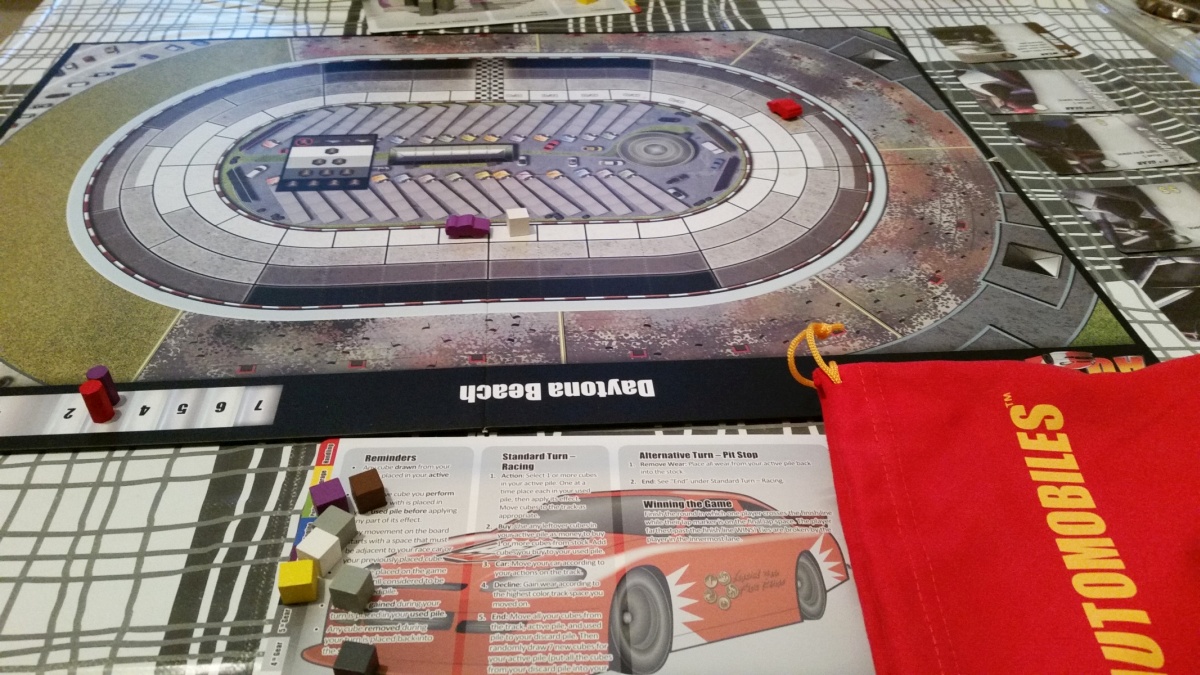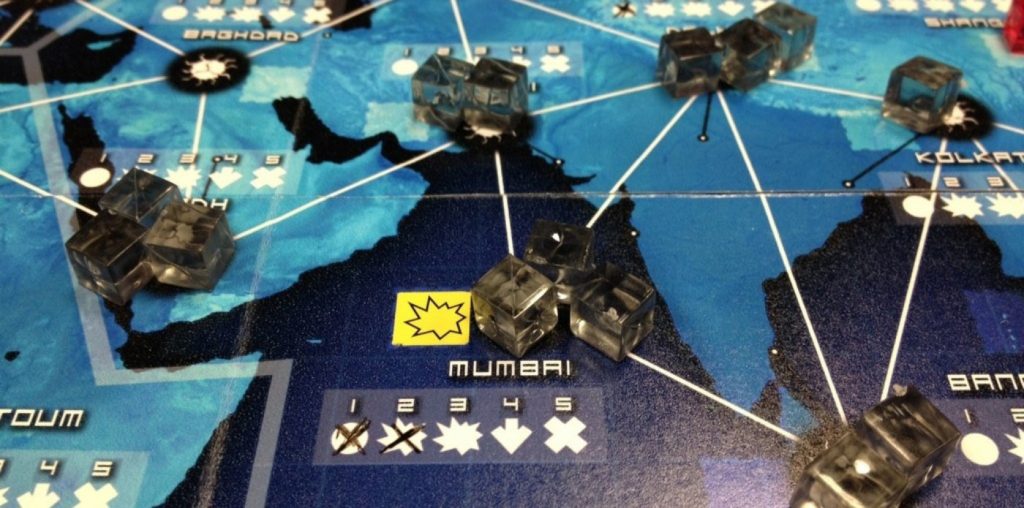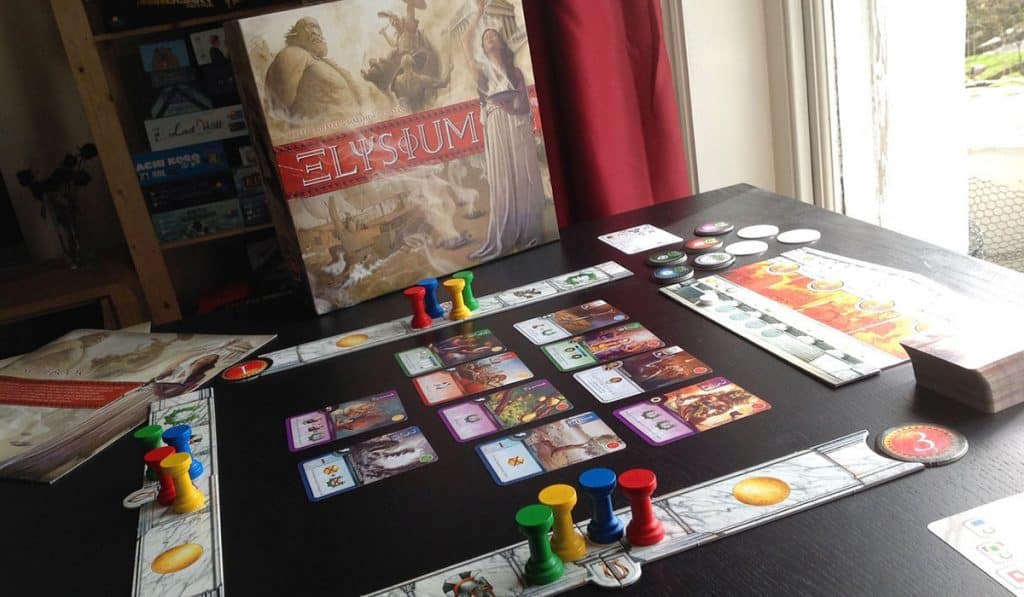[It’s a classic SU&SD mid-Golden Week turnaround review! We couldn’t go a whole week without telling you guys what to buy, so here’s Matt Thrower talking about something thoroughly awesome.]
Thrower: Deckbuilding is the dampest squib in board gaming. Riding the crest of a hype wave, it promised to change the hobby forever, yet lead to only a bunch of mediocre efficiency engine titles. The only games in the genre to stand the test of time were Arctic Scavengers, which was truly excellent, and then Trains, which worked because it supplemented the cards with a board. But you know this, because Paul and Quinns already told you it was sexy enough to make them want to have babies.
Maybe that’s why Paul went to Canada.
Now, from the same publisher, we have the even sexier Automobiles. You know it’s sexier because you’ve seen all the sexy race cars in sexy film franchises like The Fast and the Furious. A film so sexy you can use its title as a double entendre. And when you flip through the cards in Automobiles, you’ll see they have sexy names like “Boost” and “Supercharged” instead of “Normal Train” or “Limited Train”.
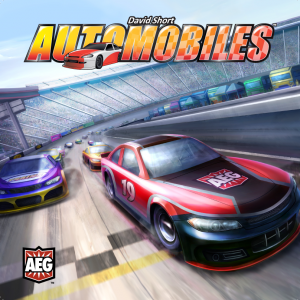
You’ll also notice that it has remarkably few cards for a deck building game. Instead, it has a deeply unsexy bag, but don’t be fooled! The bag is actually the sexiest thing about Automobiles. And not just because you get to slide your eager fingers inside and rummage around, feeling for the contents.
Let me explain. Each game of Automobiles uses four “gear” cards, which are the same every time. They match four (not fifty) shades of gray used on the racing-track board. Darker spaces are longer, representing the car going faster. Then you have five coloured cards which you can mix and match between games to create a unique set of mechanics. “Rotary Engine”, for example, lets you move one extra space for each unique colour of cube in your discard pile. “Steering” allows you to swap one gear cube for three moves on the next slowest colour, and so on.
Any cards you can’t or don’t want to use for movement can be cashed to buy more cards. Except, when you buy a “card” for your deck you instead receive a cube of the matching colour. This eventually ends up in your bag, from which you draw seven cubes each turn.
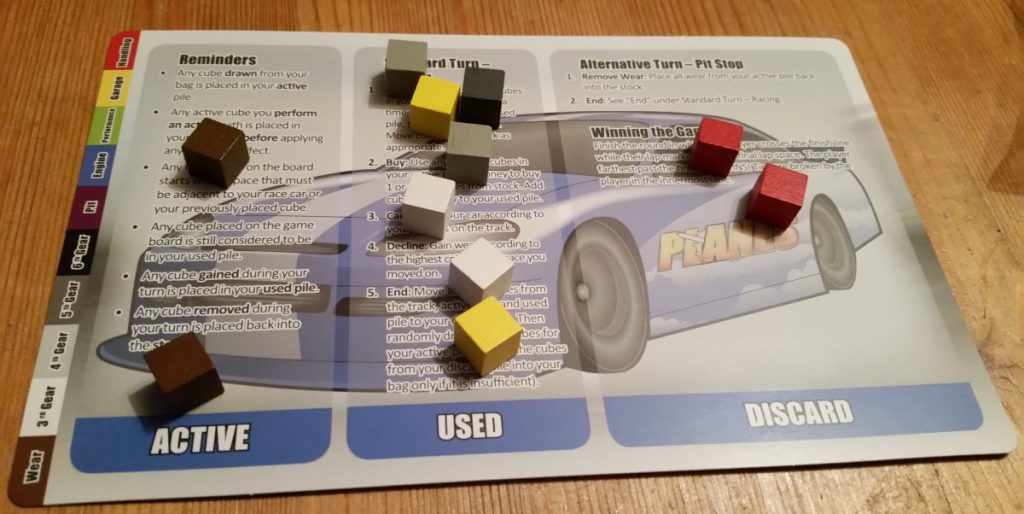
This looks and feels bizarre at first, but it’s a thing of genius. The smaller card pool makes it easy for players to get up to speed with the options. You get to see what “hand” other players have for their upcoming turn, so there’s more strategy. Setup and packing away are quick and painless. Best of all, it’s the end of the endless shuffling of games like Nightfall and Dominion.
With simple rules, it’s easy to get your game group running, even though at first no-one will have a clue what’s going on. They’ll try buying different combinations of gears and colours, just to see what happens. They’ll encounter the “wear” mechanic, which adds increasing numbers of useless brown cubes to your bag depending on your speed. Like the waste mechanic in Trains, except “wear” is obviously a lot sexier than “waste”. They’ll realise it’s central to the game and try drafting, whereby they can avoid wear if they’re directly behind another car, and they’ll find proper positioning on the track is harder than it looks.
As someone takes the checkered flag, everyone will loudly demand to play again because the game took less than an hour and now they know what’s going on they can try out a strategy. People will get cocky, which is what happens when you gain confidence with a sexy game. They’ll try leveraging the track better, making sub-optimal moves to box-in other players or set themselves up for a clear run. And by the end of that game, having mastered the mechanics, they’ll all wonder how much longevity there is in a deckbuilder with just four options each in five different colour slots.
Then the owner will suggest a different card set. Or maybe flip the board over to the more complex track on the other side. And everything will change forever.
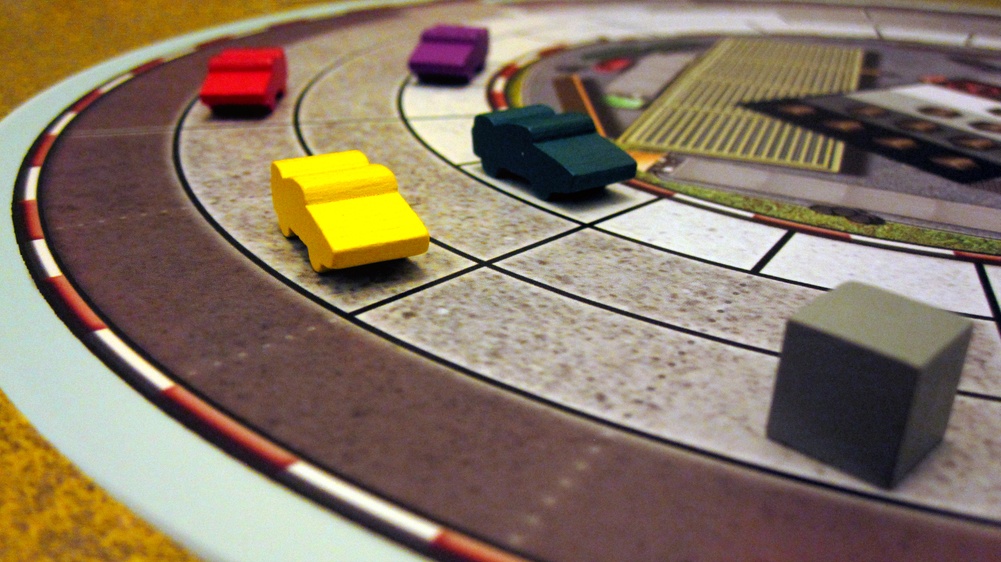
Photo credit: BGG User Rob Robinson.
Between those two tracks and four different options for each of the five card slots, it turns out that Automobiles has astonishing variety. One game might see you with a flexible variety of options that demands deep consideration to get the best from. Another might give you incredible control over what you’re got in your bag, allowing you to easily add or remove cubes as if you were seasoning a high-speed salad. Or you could go for speed above all else, sending your cars careering around the board with dizzying pace while everyone ruffles their hair and makes “vroom” noises.
Make no mistake: this is no tiresome analysis engine. It’s an engine purring with power and excitement as well as precision mechanics. You never know what’s coming out of that bag, so every draw around the table is sticky with anticipation. Those seven cubes you pull out could be like a sexy kiss, filling you with anticipation for your next move, or they could be like a cold shower that brings your car to a shuddering halt. Almost as if you were playing a roll and move game, but with weird, loaded dice of your own design.
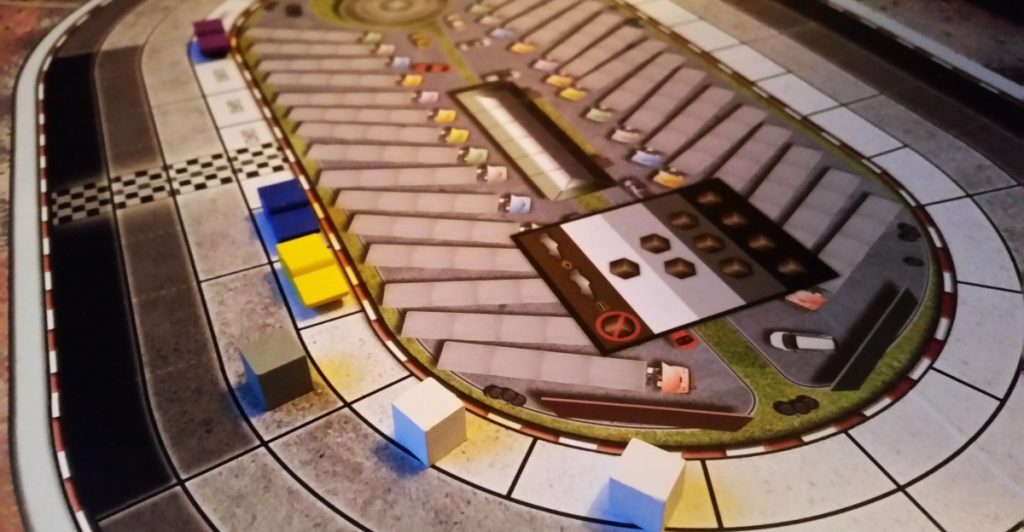
But your moves will always depend on the positioning of everyone else, which is critical to the game’s appeal. The big problem with deckbuilding is that almost all of these games are (ironically) solitaire races, where you can largely ignore what other players are doing. That’s why having a board makes such a difference in Trains. And while Trains has more direct interaction than Automobiles, this has so much more excitement. Everyone shouts and yells and hopes because someone can be miles in front and suddenly catch a bum turn. If you don’t draw a cube colour you can move with then you’re left sitting there while everyone closes the gap, making “vroom” noises and ruffling their hair with new-found urgency. This also ensures everyone is invested until the moment the winner crosses the line.
If that sounds too random for you, don’t worry! It doesn’t have to be. Races can run from one to seven laps, and the more times round the track, the more good strategy will win over luck. If you’re worried that might take too long, well… you’re right. But you should still try this. Automobiles with a full five players, with everyone moaning and jostling for position on a crowded track, might still not be a thing of beauty, but it’s a construct of fantastic fun.
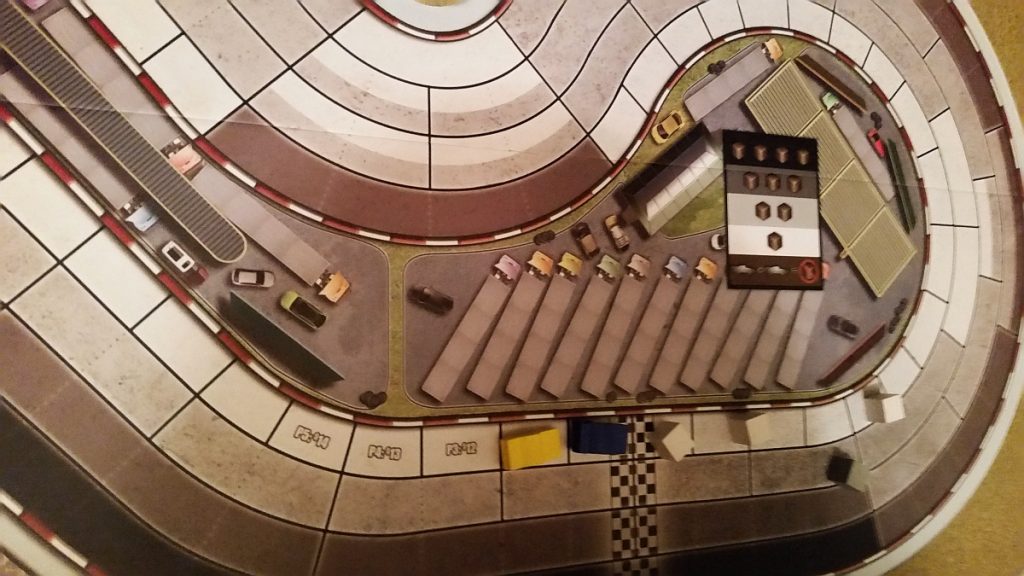
If I were going to pick a serious fault with Automobiles, it would be that it almost throws too many things into the mix. On top of strategy and tactics, interaction and replay value, there’s also timing and brinksmanship. Roll out in front too early and you risk filling your bag with wear, making you easy to catch. And with so many interlocking parts it can feel unsatisfying if you want to enjoy a particular style or mechanic. And since Automobiles doesn’t excel at any one thing, I can’t see it being anyone’s absolute favourite game.
I wanted to ask the SU&SD supercomputer what it thought about Automobiles compared to Trains, but Quinns wouldn’t let me in the house. Probably not surprising after all that cannibalism, kidnapping and nuclear war involved in my early war game reviews. But left to my own devices I’d say yes, this is different enough and good enough to make both worthwhile. What Automobiles loses in terms of strategy and interaction it makes up for in variety and raw thrills. What’s raw and thrilling about trains, I ask you? Nothing. Except, maybe, an undercooked chicken sandwich from the dining car.

